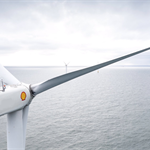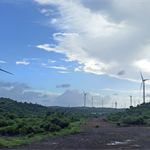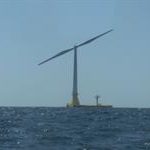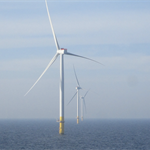Oil major Shell to supply Microsoft with renewable energy
Energy Disrupter
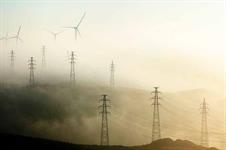
Shell and Microsoft have agreed to a “deeper” partnership to work together in reducing their and their suppliers’ carbon footprints.
The oil and gas major will supply the tech giant with output from new and existing renewable energy plants to help Microsoft meet its 2025 climate targets.
The two companies also claim to have partnered on artificial intelligence (AI) and digital tools that can offer real-time data insights and efficiencies to reduce Shell’s carbon emissions, as well as boosting onsite and worker safety. They plan to continue working together on AI and digital tools in this field.
However, Shell did not clarify how much wind and solar capacity would be involved in the supply deal, or whether the partnership would alter its own targets for renewable capacity installation or the proportion of its annual spending on clean energy compared to the total across all divisions.
Shell says it wants to become a “net-zero emissions energy business” by 2050, or sooner. It aims to reduce the “net carbon footprint of the energy products it sells” by 65% by 2050.
Meanwhile, Microsoft aims to power its entire operations with renewable energy by 2025. It also plans to become carbon-negative by removing more greenhouse gas emissions from the atmosphere than it emits by 2030, and then erasing all historical emissions by 2050 through carbon capture and sequestration technology.
Earlier this month, the tech giant entered a partnership – similar to its pact with Shell – with oil and gas major BP.
According to figures from Windpower Intelligence, the research and data division of Windpower Monthly, Shell has stakes in 746MW of operational onshore wind capacity, and in the 108MW Offshore Windpark Egmond aan Zee (OWEZ) in the North Sea off the Dutch coast. Of its 10 operational wind farms, six are in the US and four are in Europe. It also has stakes in nearly 6GW of under-development offshore wind farms.
Meanwhile, Microsoft has deals in place to buy output from onshore projects with a combined capacity of 1,032MW, includingLas Lomas, which comes online in 2021. Five of the wind farms it has power deals for are in the US, one is in Ireland and the other is in the Netherlands.
Both companies say they will expand their existing technological collaboration to “commit to a new strategic alliance” in a move towards net-zero emissions.
Judson Althoff, executive vice president of Microsoft’s worldwide commercial business said: “Cross-industry collaborations like this are fundamental to help society reach net-zero emissions by 2050, and digital transformation is key to tackling this important issue, within the energy sector and beyond.”
A Shell spokesperson added: “There aren’t specific targets at this stage of exactly the energy mix we will provide. To help meet Microsoft’s 100% renewable energy commitment by 2025, Microsoft and Shell will work together to secure renewable energy supply from Shell in a number of global energy markets.
“Many projects that are part of this partnership are already up and running, others will be new. For example, Shell and Microsoft have been working over the past three years on the Shell.ai programme (Shell’s artificial intelligence programme). So far this year, over 47 differentiated AI-powered proprietary applications been deployed across Shell’s businesses, with many more in the pipeline.
“We haven’t set a target for renewable power generation across Shell as a whole, but have already established positions in wind and solar and are looking to grow.”
According to its most recent annual report, Shell planned annual expenditure of €1-2 billion in its New Energies division – set up in 2016 to invest in “lower carbon technology” and to “explore new commercial models focused on the world’s energy transition”. This is a small fraction of the company’s €28 billion total capital expenditure in 2019.
With three months remaining in 2020, Shell has so far invested $2.3 billion in its New Energies division since it was launched – well short of the oil giant’s own guidance of investing $4-6 billion in the unit between 2016 and the end of this year.
Norwegian consultancy Rystad Energy compiled data that showed ten of Europe’s big oil firms – including Shell, BP, Total, Equinor and Eni – spent a combined $5.5 billion on renewable energy projects up to the start of 2020, compared to a total budget of $90 billion in 2019. The consultants forecast Shell to spend the most on renewables between 2026 and 2030 of the ten companies analysed.
In terms of solar, Shell said it has invested in three developers:
- Silicon Ranch Corporation (USA) with approximately 823MW of installed capacity and 1,010MW of signed and in-development capacity. Shell acquired a minority interest of 43.83%.
- Cleantech Solar (Asia) with approximately 158MW of installed capacity and 146MW of signed and in-development capacity. Shell’s acquired interest is 49%.
- ESCO Pacific (Australia) with 500MW of operational capacity and 350MW under long-term asset management. Shell fully owns ESCO Pacific.
The oil giant says that through its partner companies Silicon Ranch and Cleantech Solar, Shell has more than 240 solar farms in 12 countries in its portfolio – generating enough to power more than 1 million homes.
A Shell spokesperson added that in terms of spend on its New Energies business unit specifically, from 2016-2019 it spent $2.3 billion (Capex only) in power.
Shell said its Capex spend on energy transition is wider than the new energies business alone.
The spokesperson explained: “55% of our Capex goes to areas of the business that are part of the energy transition – such as LNG, petrochemicals and our marketing businesses that all will play an import role in the energy transition over the coming decades.”
Shell said its Capex framework for 2020 was $20-25 billion but said that it will manage cash Capex to $20 billion or lower in 2020.


